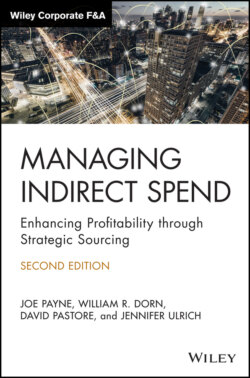Читать книгу Managing Indirect Spend - Joseph Payne, Joe Payne - Страница 29
DEALING WITH DECENTRALIZED DATA SETS
ОглавлениеThis leads us into the next challenge, which is how to deal with decentralized spend. Decentralized spend typically means that a supplier relationship (and subsequent payment to that supplier) does not flow through a single point of contact or group, such as a centralized Accounts Payable team and payment process. Instead, employees out in the field (or at satellite locations) are able to place, pay for, and process orders for goods and services without oversight from a centralized entity.
This impacts the spend analysis in several ways. First, if your company has grown by acquisition, it is possible that different sites are utilizing different ERP systems. These systems may or may not roll into a single financial system.
Second, when the responsibility of ordering and paying for goods and services falls to multiple people (or groups of people), it usually results in a variety of payment procedures. For example, some locations might run all purchases through a purchase order system and pay via check, while others may pay via a purchasing (credit) card, and others may receive invoices and pay via electronic funds transfer.
Depending on your situation, it may be a good idea to enlist the support of the Finance department, the Information Technology (IT) department, or both. If you are dealing with a situation where multiple ERPs are used, Finance can give you a good indication of how those systems interact with each other. Finance can also shed light on the types of payment options that are used within the organization and how those options are reflected in various ledgers and reports.
IT should also be able to help run the reports you need. In addition, IT may be able to aid in standardizing and consolidating data sets coming from different sources.
If some payments are going to vendors through a procurement card (p‐card), the transactions you pull out of your ERP are only going to reflect payments to your p‐card company, not the vendors you were actually paying. However, most p‐card providers can give you reports that detail whom you have paid with their cards. These reports can be as simple as a list of suppliers and total amounts, or as detailed as a line‐by‐line account of particular items purchased and quantities. If you do not already have access to this data, Finance should be able to provide you with the appropriate reports.
When working with IT or Finance, remember that (during this first pass of data collection and analysis) you are simply trying to identify total spend by supplier over a period of time, normally a year. Two to three years might also make sense if one of your goals is to identify trends over time.
